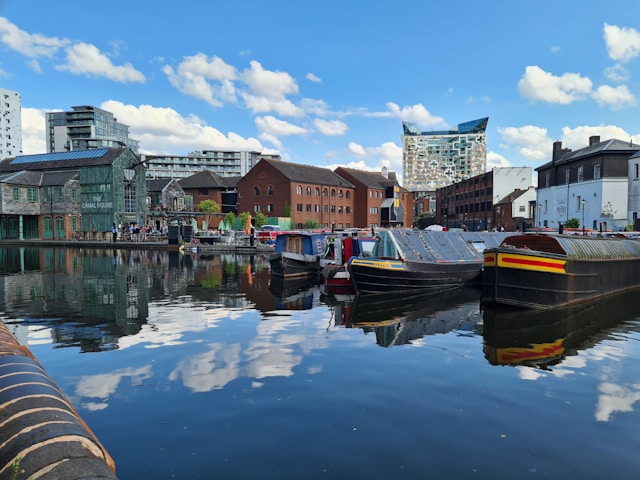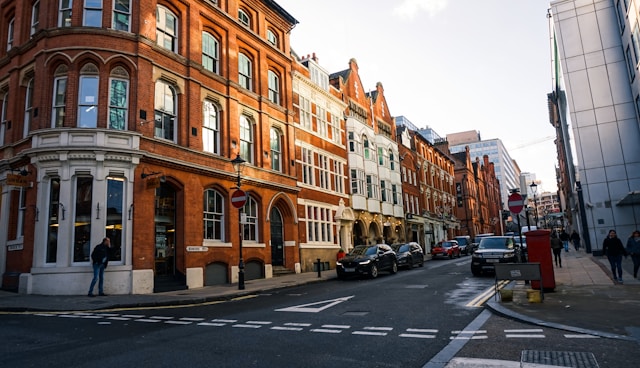Extending your house in Birmingham 2025: A regional guide to costs, planning and value
Founder, Planning to Build

Considering a home extension in Birmingham? Whether you need more space for a growing family, want to boost your property’s value, or simply reimagine how you live, this guide covers the key facts — from typical costs and planning rules to what’s driving demand across Birmingham’s property market.
Why extend in Birmingham?
With Birmingham’s population on the rise and major regeneration projects like HS2 and the Big City Plan reshaping the city, demand for space is only increasing. From improved transport links to investment in city-centre neighbourhoods, these changes are making Birmingham an even more attractive place to live — and that’s putting pressure on the local housing stock. For many homeowners, extending offers a practical way to stay put and adapt their home to fit changing needs, without facing the cost and hassle of moving.
This is especially true in popular areas like Harborne, Moseley, Kings Heath and Sutton Coldfield, where property values have steadily increased and available homes are often snapped up quickly. In these high-demand neighbourhoods, adding space through a thoughtful extension can not only improve day-to-day living but also deliver long-term value. Whether you're adding a kitchen-diner, an extra bedroom or a home office, extending in Birmingham remains a smart and future-proof choice.
Birmingham by the numbers: why extensions make sense
- Average house prices in Birmingham reached £234,000 in April 2025 — up 5.6% year-on-year — exceeding the regional average growth
- The population is expected to grow from around 1.14 million (2021) to 1.23 million by 2030, adding pressure to the existing housing stock. Extending your home is one of the most cost-effective ways to gain space and boost property value.
- Regeneration efforts driven by projects like HS2 and the Big City Plan have brought a £10 billion economic uplift to Birmingham, along with a 66% rise in planning applications and a staggering 484% increase in new homes planned within HS2 impact zones. As infrastructure improves and connectivity becomes a key selling point, well-located extensions in high-demand areas are becoming even more valuable to both homeowners and future buyers.
Extending your home is not only a smart way to gain extra space — it’s also a solid investment in a city undergoing transformation.

How much do house extensions cost in Birmingham?
When it comes to building an extension, Birmingham offers excellent value compared to much of the UK — especially London and the South East. According to regional construction indices, Birmingham’s average build costs are approximately 13.4% lower than Outer London, making it a far more cost-effective option for homeowners looking to expand.
Compared to the UK average, Birmingham’s construction costs are around 3% lower. While that difference might sound modest, it can lead to meaningful savings on larger projects — especially once materials, labour, and contingency costs are factored in. Birmingham also benefits from a strong network of local builders and trades, helping to keep lead times and pricing more competitive than in high-pressure southern markets.
What does this mean in real terms?
Actual extension costs will vary depending on your design, finish level and site-specific factors such as access or structural complexity. However, here are some ballpark figures based on standard mid-range builds:
- 20m2 Single storey rear or side extension - £55,200 - £61,100
- 40m2 Single storey wrap around extension - £102,500 - £113,400
These example prices are based on data from our own extension cost calculator, which uses real project inputs and regional pricing benchmarks to give accurate local estimates.
These estimates typically include foundations, walls, roof, glazing, insulation, electrics and internal finishes - but not kitchens, bathrooms, or bespoke finishes, which can significantly increase the total cost.
It’s also important to factor in fees for planning applications (if required), building regulations approval, architectural design and structural engineering. Contingency budgets of 10–15% are also strongly advised to cover any unexpected costs or changes once the build is underway.
👉 Try our calculator now to get a clearer idea of what your extension in Birmingham might cost, before the quotes start rolling in.
How much value can an extension add?
Using Plumbplot's 2025 data, the average price per m2 is £3000 therefore:
- 20m2 Single storey side or rear extension - £60,000
- 40m2 Single storey wrap around extension - £120,000
That means many well-executed extensions can either break even or deliver a modest uplift in the short term, with stronger returns possible over 3–5 years as the housing market continues to grow. In other words, extending isn’t just about space — it can also be a solid long-term investment.
These figures are based on added internal floor area alone and assume that the new space is well-integrated and finished to a good standard. In reality, the value added will depend on multiple factors - including the quality of the build, the type and layout of the extension, the design choices you make and the specific location of your property within Birmingham.
For example, a thoughtfully designed kitchen/diner that improves flow and natural light could have a bigger impact on value than simply adding square footage. Equally, extensions in sought-after neighbourhoods like Chorlton or Didsbury may yield higher returns than those in areas with less buyer demand.
These figures should be seen as a starting point, not a guarantee. Local housing trends, buyer expectations, and planning limitations all play a part - which is why it’s worth speaking to a local estate agent or surveyor for a more tailored view.
Where are the best areas to extend?
Digbeth and the Jewellery Quarter are among the most exciting places to extend right now, thanks to creative-led regeneration and major investment through the Big City Plan. Digbeth is fast becoming one of the city’s most dynamic neighbourhoods, with property prices forecast to rise by 8–12% annually. The Jewellery Quarter also appeals to investors, offering 5–7% rental yields alongside strong capital growth. For homeowners, adding high-quality space in these areas means tapping into a younger, design-conscious market looking for stylish, city-centre living.
Harborne and Edgbaston continue to be two of Birmingham’s most desirable suburbs, especially for families. Harborne offers a village feel with strong local amenities and top-performing schools, while Edgbaston is known for its leafy streets, excellent transport links, and proximity to the University of Birmingham. Both neighbourhoods see steady capital growth—typically 6–8% per year—and extensions here tend to be well received by buyers looking for long-term homes with plenty of space.
Moseley and Stirchley stand out for their strong sense of community and creative energy. Moseley is known for its bohemian vibe, independent shops and arts scene, while Stirchley has transformed into one of the city’s most up-and-coming areas. In fact, Stirchley was named the best place to live in the Midlands in 2024, reflecting its growing appeal. An extension in either of these areas has the potential to capture the interest of buyers who value personality, walkability and a neighbourhood feel.
Sutton Coldfield offers a more suburban option with consistently strong demand. With average house prices around £341,000, it provides a blend of affordability and access to green spaces, reputable schools and quick commutes into the city (around 25 minutes by train). Families are drawn here for long-term stability, and adding extra space in the form of a loft, rear or double-storey extension can help meet that demand and increase a property’s marketability.
Kings Heath and Bournville are two more areas where extending makes sense. Kings Heath is known for its café culture, parks, and growing popularity with first-time buyers and young families, while Bournville’s heritage and charm—rooted in its Cadbury legacy—mean homes retain value well. Both areas are more affordable than Edgbaston or Harborne, yet still attract strong buyer interest thanks to their lifestyle appeal and solid connectivity.
All of these neighbourhoods share some key advantages when it comes to extending: high levels of buyer demand, ongoing capital growth, and the kind of community amenities that add long-term value. Whether you’re planning to stay put or sell in a few years, extending in these parts of Birmingham can deliver both quality-of-life improvements and a meaningful return on your investment.

Planning permission and local regulations
Like many UK cities, Birmingham has conservation areas and Article 4 directions that remove permitted development rights. These are especially common in Moseley, Edgbaston, Jewellery Quarter, Harborne and Bournville.
If you’re planning to build an extension, the Birmingham City Council planning pages are the best place to begin.
Birmingham City Council’s planning map also lets you quickly see if your home is in a conservation area, affected by an Article 4 direction, or subject to other local planning policies.
When you’re ready to apply, you’ll do so through the national Planning Portal. This is the official UK government platform for submitting householder planning applications, lawful development certificates, and tracking decisions. Most applications for extensions in Birmingham go through this route.
Explore local planning constraints
Before starting, it’s essential to check local planning constraints. Our free postcode checker can help you identify if your home is affected.
Planning rules can be hard to untangle — conservation areas, Article 4 directions, permitted development limits… it’s a lot to keep track of.
Our service brings it all together. Just enter your postcode to check local planning constraints, estimate extension costs, and understand what’s likely to get approved — all in one simple tool.
Extending your home in Birmingham can be a smart move — both financially and practically. With steady house price growth, a strong local economy, and rising demand for well-designed family spaces, a well-executed extension can add real value to your property while improving your everyday living.
But getting it right means doing your homework. From understanding local planning rules to budgeting realistically and thinking carefully about design, there’s a lot to consider. The good news? You don’t have to figure it all out alone. Our tools bring together everything you need to get started — from planning checks to cost estimates — all tailored to your postcode.